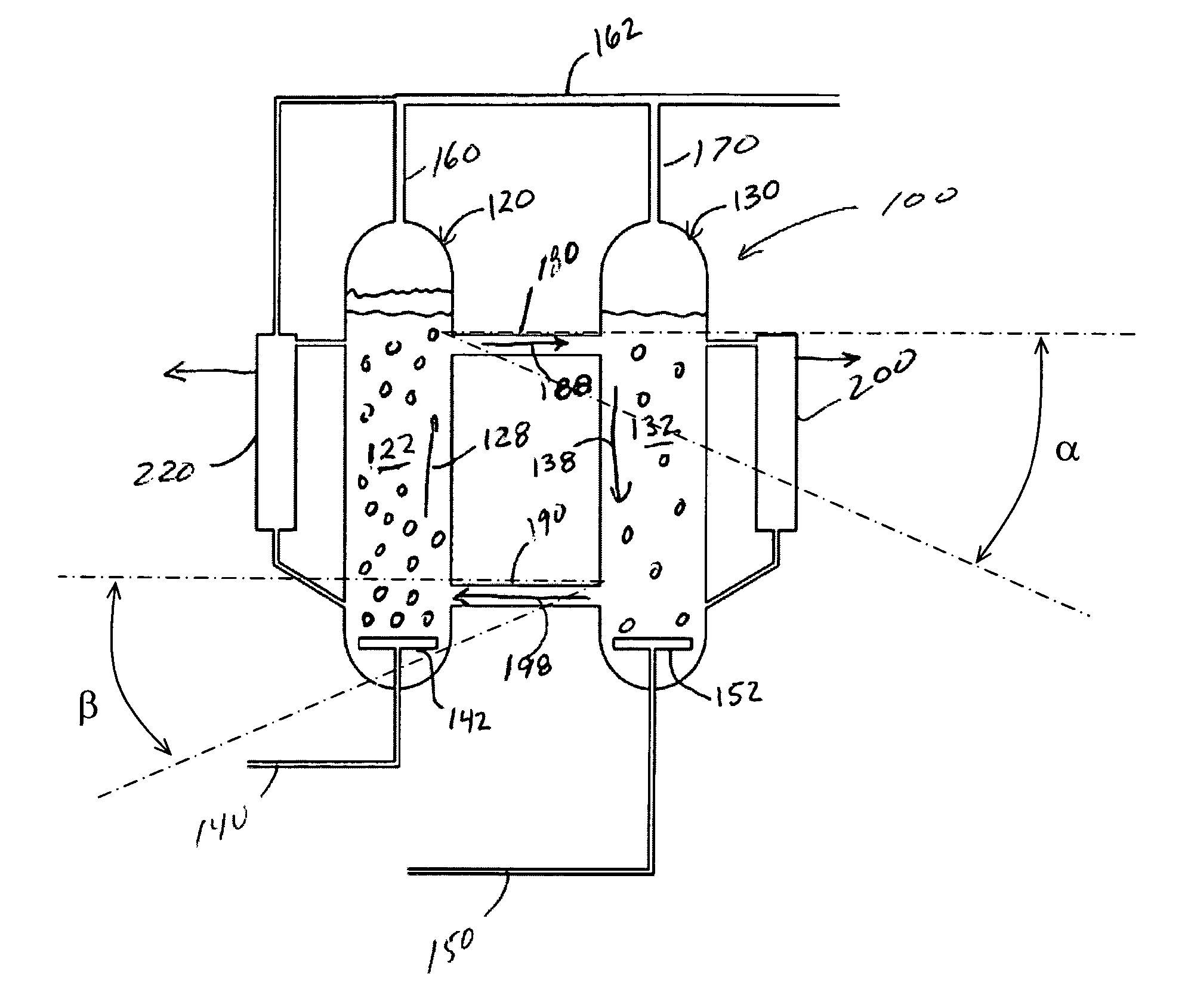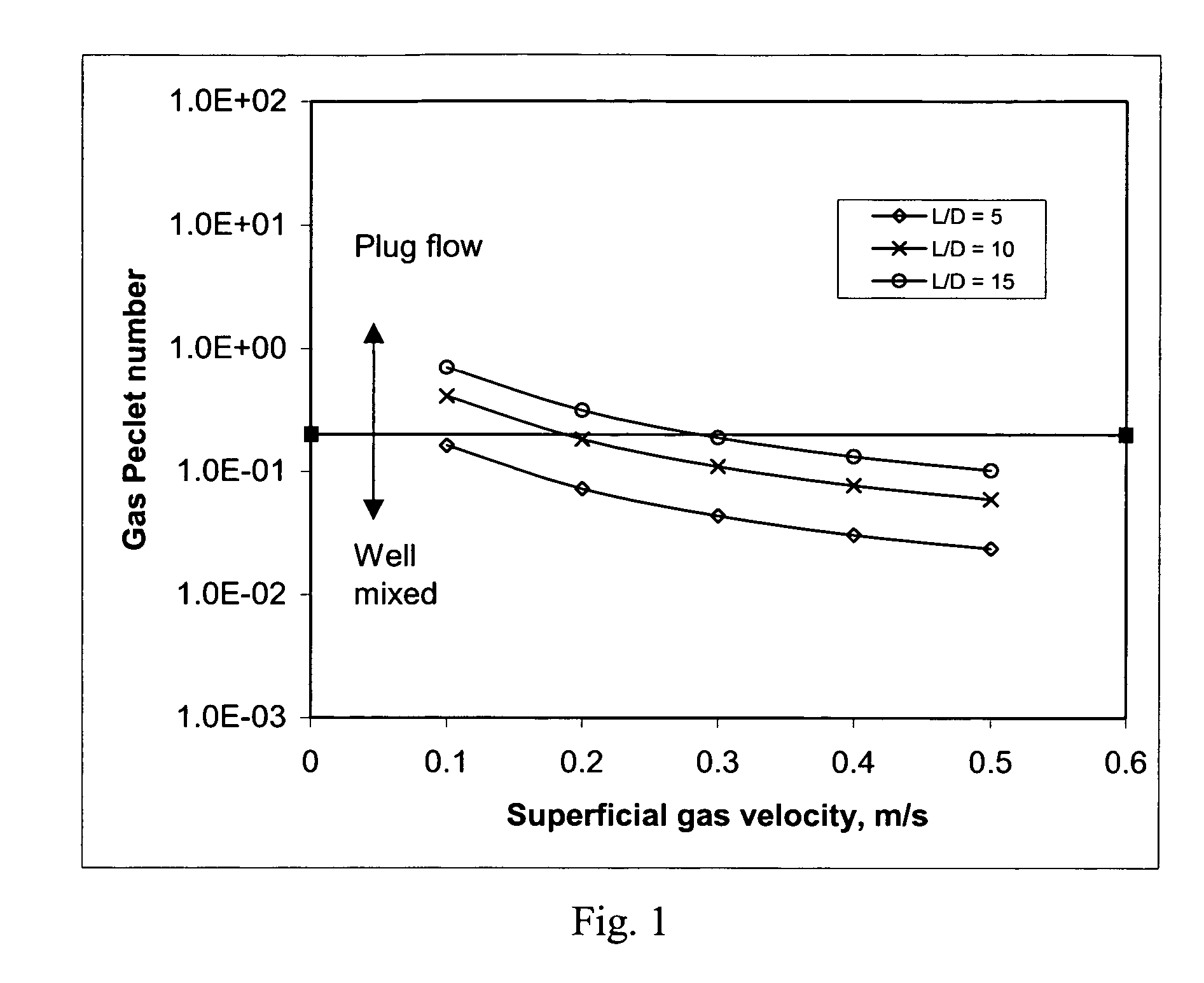Conjoined reactor system
- Summary
- Abstract
- Description
- Claims
- Application Information
AI Technical Summary
Benefits of technology
Problems solved by technology
Method used
Image
Examples
examples
[0072]The following theoretical examples illustrate the principles and advantages of the present invention.
[0073]Conventional reactors were modeled at two superficial gas velocities and two temperatures. In addition, a reactor system embodying the present invention was modeled at similar operating conditions. Results of those simulations are given in Table 1 below. It can be seen that when the reactors are coupled in the manner described herein, a given catalyst system can be operated at a much higher productivity. Specifically, for a given maximum temperature of 223° C. (dependent on the catalyst composition and structure), reactors without liquid circulation have to be operated at an average temperature of 220° C. in order to ensure that no portion of the reactor experiences temperatures above the allowable maximum. At 220° C., the CO conversions are 49.5% and 72.4% for the inlet superficial gas velocities of 0.3 and 0.2 m / s, respectively. When these two reactors are conjoined, bo...
PUM
| Property | Measurement | Unit |
|---|---|---|
| Angle | aaaaa | aaaaa |
| Angle | aaaaa | aaaaa |
| Structure | aaaaa | aaaaa |
Abstract
Description
Claims
Application Information
 Login to View More
Login to View More - R&D
- Intellectual Property
- Life Sciences
- Materials
- Tech Scout
- Unparalleled Data Quality
- Higher Quality Content
- 60% Fewer Hallucinations
Browse by: Latest US Patents, China's latest patents, Technical Efficacy Thesaurus, Application Domain, Technology Topic, Popular Technical Reports.
© 2025 PatSnap. All rights reserved.Legal|Privacy policy|Modern Slavery Act Transparency Statement|Sitemap|About US| Contact US: help@patsnap.com



